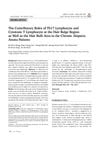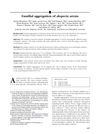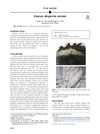TLDR Patients with Alopecia areata have fewer specific immune cells that normally regulate the immune system, which may contribute to the condition.
The study investigated the role of T regulatory cells (Tregs) in Alopecia Areata (AA) by comparing 20 AA patients with active hair loss to 15 healthy subjects. It found a significant reduction in the Treg suppressor HLA-DR+ subpopulation and CD39+ cells among the CD4+CD25+Foxp3+ Treg subpopulation in AA patients. Specifically, FOXP3+CD39+ Treg cells were reduced by 75% in non-lesional skin and 90% in lesional skin of AA patients. Additionally, the study identified unique Treg clonotypes in healthy individuals that were absent in AA patients, suggesting a protective role. The findings suggest that the deficiency of these Treg cells may contribute to the disease process and that targeting CD39 expression on T-cells could be a potential therapeutic approach. The study also noted a clonotypic restriction in the Treg TCRβ-chain in AA patients, indicating a less diverse TCR repertoire, which could be involved in the pathogenesis of AA.
 18 citations
,
January 2017 in “Annals of dermatology/Annals of Dermatology”
18 citations
,
January 2017 in “Annals of dermatology/Annals of Dermatology” Certain immune cells contribute to severe hair loss in chronic alopecia areata, with Th17 cells possibly having a bigger impact than cytotoxic T cells.
56 citations
,
October 2016 in “Journal of dermatological science” New insights into the causes and treatments for the autoimmune hair loss condition Alopecia areata have been made.
 295 citations
,
May 2016 in “Journal of the American Academy of Dermatology”
295 citations
,
May 2016 in “Journal of the American Academy of Dermatology” Alopecia areata, a common autoimmune hair loss condition, often runs in families.
 62 citations
,
June 2015 in “The Journal of Dermatology”
62 citations
,
June 2015 in “The Journal of Dermatology” People with alopecia areata have more Th17 cells and fewer Treg cells, which may be key to the condition's development.
62 citations
,
January 2015 in “Journal of Dermatological Science” New genetic discoveries may lead to better treatments for alopecia areata.
 16 citations
,
January 2015 in “Current problems in dermatology”
16 citations
,
January 2015 in “Current problems in dermatology” Alopecia Areata is an autoimmune hair loss condition that needs more research for better treatments.
23 citations
,
December 2013 in “Journal of Investigative Dermatology Symposium Proceedings” Genetic discoveries are leading to new treatments for alopecia areata.
 148 citations
,
December 2018 in “Journal of autoimmunity”
148 citations
,
December 2018 in “Journal of autoimmunity” Alopecia areata is an autoimmune disease causing patchy hair loss, often with other autoimmune disorders, but its exact causes are unknown.
 4 citations
,
November 2018 in “JAAD case reports”
4 citations
,
November 2018 in “JAAD case reports” Alopecia areata can sometimes appear as a straight line of hair loss instead of round patches.
May 2018 in “Journal of cosmetology & trichology” Combining platelet-rich plasma therapy with prostaglandin-F eye drops can significantly regrow hair in alopecia universalis.







